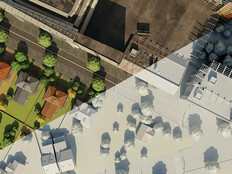Tracking a City’s Vitals Improves Public Safety
Emergency operations centers and real-time crime centers for first responders have been in use for years, and they’ve become sophisticated. You might call them the heartbeat of public safety.
But a city’s well-being depends on more than just emergency response. There are other vital signs, and there should be an equivalent of an EOC for things that aren’t emergencies.
For example, consider municipal vehicle fleets used in public service. They might go to a garage for regular maintenance — say, to replace worn tires and change the oil. However, underinflated tires can decrease fuel efficiency over time, which adds significantly to fuel costs.
By using sensors integrated into the vehicle's systems (such as the controller area network bus, which allows electronics to communicate inside a vehicle), real-time data can be collected and sent back to a central network. Such information could be displayed on large screens in a garage showing the status and location of each vehicle.
This would help manage maintenance needs proactively, ensuring issues like low tire pressure are addressed in a timely manner. The benefit would be considerable fuel savings and less risk of a failure that could land a city vehicle in the shop at an inconvenient time.
RELATED: Memphis confronts seasonal street damage with AI-enabled capabilities.
Such smart infrastructure could apply broadly to city use cases. For example, checking for water leaks in buildings can be a time-consuming and inefficient process for housing authorities. Instead of sending inspectors to every building each month, regardless of whether there are issues, the city could install sensors that detect moisture in key areas; for instance, around boilers in basements. These sensors would send real-time data to a central dashboard, alerting inspectors to buildings with specific problems, like a water leak. This gives inspectors the ability to address problems in order of priority rather than on a fixed schedule.
As a result, housing authorities could save time and money, as it would prevent unnecessary inspections and, more important, address issues before they escalate into expensive repairs or potential health problems such as molds and moisture-borne bacteria proliferating in an HVAC system.
Smart Cities Are Easier to Look After
One of the top questions asked after a crime is committed in a park or on a city sidewalk is, “Were there cameras nearby?”
More information helps cities take preventive action to avert expensive and dangerous events, and allows officials to react faster when something does go wrong. In the long run, this can help cities reduce costs, prevent threats to public safety and solve problems faster.
If cities can demonstrate these gains to citizens — for instance, by publicizing the efficiencies gained from being more proactive about caring for emergency vehicles, or streaming live video feeds onto a county website to help locals stay informed — it will be easier to help them understand that smart city investments can improve their lives.
As they say, a stitch in time saves nine. But before you can prevent a small thing from snowballing, you have to find it and bring it to light. Better-connected infrastructure that can keep the pulse of a city does exactly that.
UP NEXT: Smart streetlights help smart cities launch networking initiatives.













